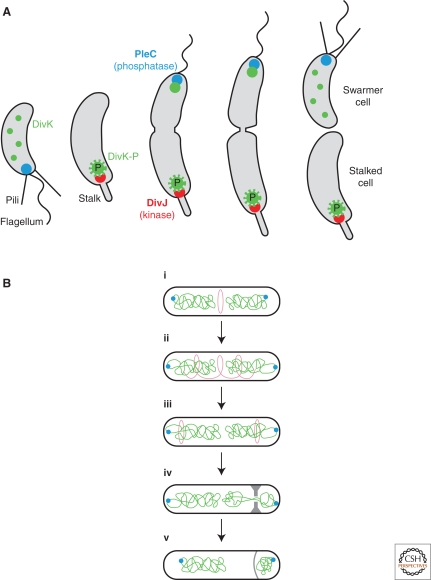Figure 5.
Cell polarity in bacterial differentiation. (A) C. crescentus generates two different daughter cells during each cell cycle, the flagellated swarmer cell and the stalk cell. A key determinant of this differential cell fate is DivK, a target of the kinase DivJ and the phosphatase PleC that are themselves located at opposite poles of the dividing cell. Illustration provided by Zemer Gitai. (B) B. subtilis undergoes a transition from a symmetric division to an asymmetric division on entry into sporulation. The FtsZ ring is normally at mid-cell (i), but migrates (ii) in sporulation to polar positions (iii). One of these Z-rings becomes the site of asymmetric septum synthesis (iv). Following completion of chromosome segregation into the forespore (v), the process of engulfment starts beginning with the septum becoming curved. Adapted from Ben-Yehuda et al. 2003 with permission.

